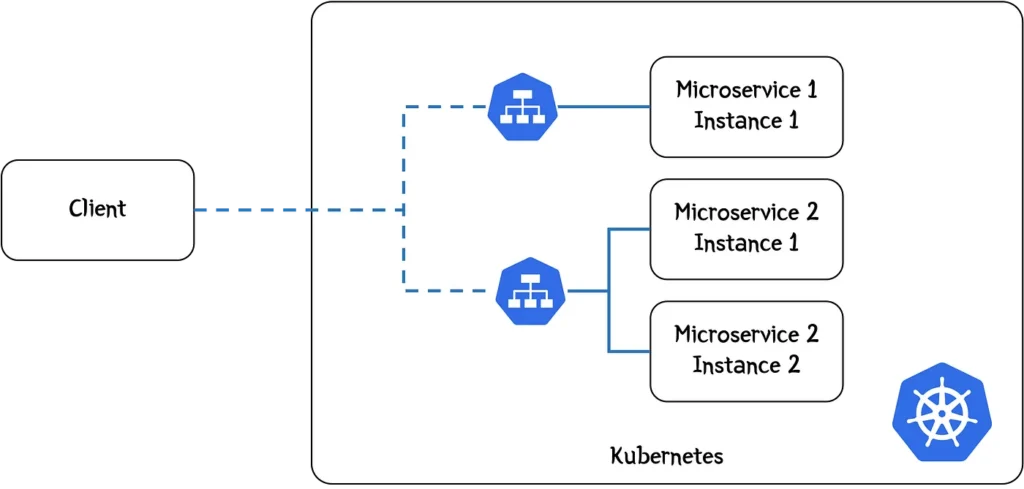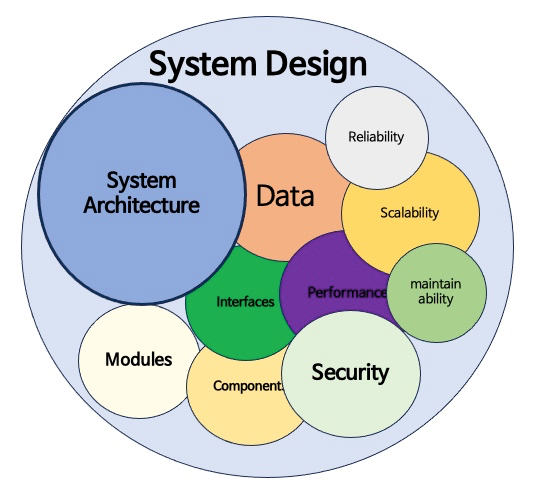Choosing the Right Gateway: Navigating API Gateway vs Ingress Controller vs NGINX in Kubernetes

When building microservices-based applications, it can be challenging to determine which technology—API Gateway, NGINX, or an Ingress Controller—is best for connecting services. These tools play distinct roles in managing traffic, but each has its own set of strengths depending on the use case. Understanding the Key Components: Choosing the Right Solution: Real-World Use Cases: #Pseudo Code for API Gateway routingroutes: – path: /order-history services: – user-service – order-service 2. Internal Application in KubernetesFor a simple internal application where different teams use distinct services, an Ingress Controller can be set up to manage HTTP/S routing, exposing internal applications securely within the cluster. # Pseudo Ingress RuleapiVersion: networking.k8s.io/v1kind: Ingressmetadata: name: internal-appspec: rules: – host: app.internal.example.com http: paths: – path: /team1 backend: service: name: team1-service port: number: 80 3. Hybrid SolutionA hybrid scenario might use both an API Gateway for external API requests and NGINX as a load balancer within the Kubernetes cluster. This setup is common for public-facing applications where internal service-to-service communication requires more granular control. Choosing between an API Gateway, Ingress Controller, or NGINX boils down to your application needs. API Gateways are best for complex routing and security, while Ingress Controllers are ideal for HTTP routing in Kubernetes, and NGINX offers flexibility for custom traffic management. Advanced Use Case: Advanced Use Case: Microservices-based Financial Platform with API Gateway, NGINX, and Service Mesh Imagine a financial platform where you handle multiple services like user authentication, payments, and transactions. In this scenario: Architecture: Pseudocode Example: This setup can include defining an API Gateway for external APIs, and using an Ingress Controller for internal routing. For inter-service communication, a Service Mesh will enforce security and provide monitoring. Code Link: https://github.com/sacdev214/apigatwaycode.git This architecture ensures that: Scenario-Based Questions and Answers: 1. Scenario: You are working with a simple Kubernetes cluster running internal services with no external traffic. Which component would be best to route traffic between these services? 2. Scenario: A public-facing e-commerce website needs to handle thousands of requests per minute, with several microservices handling user profiles, orders, and payments. Which component should you use for managing these requests efficiently? 3. Scenario: You need to enforce strict rate limiting, traffic throttling, and security policies on external APIs exposed by your Kubernetes services. Which tool should you consider? 4. Scenario: Your application is deployed on Kubernetes and has simple HTTP services that need exposure to the internet. What is the most Kubernetes-native solution? 5. Scenario: You are building a microservices architecture where each service communicates with others via HTTP, and you need to ensure inter-service communication is secure and well-monitored. Which solution would be best?
Mastering System Design Interviews: Key Questions and Tips for Success

When preparing for a System Design Interview (SDI), it’s easy to feel overwhelmed by the breadth and depth of knowledge required. Whether you’re a seasoned developer or new to the field, understanding how to approach these questions is crucial for success. In this blog, we’ll explore some common system design questions, from easy to hard, along with tips to help you navigate the interview process with confidence. Easy System Design Interview Questions 1. Design an API Rate Limiter An API rate limiter is a crucial component for platforms like Firebase or GitHub, which serve thousands of requests per second. Your task is to design a system that limits the number of requests a user can make to an API within a specified time frame, preventing abuse and ensuring fair usage. Key Considerations: 2. Design a Pub/Sub System A pub/sub system, such as Kafka, allows for asynchronous communication between different parts of a system. The challenge is to design a system where publishers send messages to topics and subscribers receive those messages. Key Considerations: 3. Design a URL-Shortening Service Designing a service like TinyURL or bit.ly involves creating a system that takes long URLs and generates shorter, unique versions. Key Considerations: Medium System Design Interview Questions 4. Design a Chat Service Services like Facebook Messenger or WhatsApp are examples of complex chat systems. Your goal is to design a system that supports real-time messaging between users. Key Considerations: 5. Design a Mass Social Media Service Social media platforms like Facebook or Instagram serve millions of users daily. The challenge is to design a system that supports user profiles, posts, likes, comments, and a newsfeed. Key Considerations: 6. Design a Proximity Service A service like Yelp or a feature like “Nearby Friends” on social media platforms relies on determining users’ locations and providing relevant results. Key Considerations: Hard System Design Interview Questions 7. Design a Social Media Newsfeed Service The newsfeed is a central feature of many social media platforms. Your task is to design a system that curates and displays content for users based on their interactions. Key Considerations: 8. Design a Collaborative Editing Service Services like Google Docs allow multiple users to edit documents simultaneously. The challenge is to design a system that supports real-time collaboration without conflicts. Key Considerations: 9. Design Google Maps Designing a service like Google Maps involves creating a system that handles complex geographic data and provides routing and location services. Key Considerations: Tips for Tackling System Design Interview Questions 1. Start with Requirements: Begin by listing the key features your system needs to support. Identify potential challenges like traffic load, data storage needs, and user concurrency. This process will help you plan and also allows the interviewer to clarify any misunderstandings. 2. Narrate Trade-offs: Every design decision comes with pros and cons. Whether it’s choosing a database, a caching strategy, or an algorithm, explain the trade-offs involved. This shows your ability to think critically and make informed decisions. 3. Ask Clarifying Questions: Most SDI questions are deliberately broad, leaving room for interpretation. Asking clarifying questions not only helps you understand the problem better but also demonstrates your thoroughness and problem-solving approach. 4. Know Your Architectures: Modern systems often rely on microservices architecture for flexibility and scalability. Be prepared to discuss how you’d use microservices and how they can interact with legacy systems if applicable. 5. Discuss Emerging Technologies: Conclude your discussion by considering how emerging technologies like machine learning, AI, or blockchain could enhance the system. This shows you’re forward-thinking and prepared to build systems that can adapt to future needs. Related Questions and Answers Q1: What are the different strategies for implementing an API rate limiter? A1: There are several strategies for implementing an API rate limiter, each with its own use cases: Q2: How do you ensure message durability in a Pub/Sub system like Kafka? A2: Message durability in a Pub/Sub system can be ensured through several mechanisms: Q3: What are the key challenges in designing a URL-shortening service, and how can they be addressed? A3: The main challenges in designing a URL-shortening service include: Q4: In a chat service like WhatsApp, how do you manage message ordering and delivery guarantees? A4: Managing message ordering and delivery guarantees in a chat service involves: Q5: How would you handle data consistency in a distributed system, such as a social media platform? A5: Handling data consistency in a distributed system can be challenging due to the CAP theorem, which states that you can only have two of the following three: Consistency, Availability, and Partition Tolerance. Strategies include: Q6: What are some common challenges in designing a video streaming service like Netflix, and how can they be mitigated? A6: Designing a video streaming service involves several challenges: Q7: How would you design a search engine-related service like Typeahead, and what are the key considerations? A7: Designing a Typeahead service, where suggestions are shown as the user types, involves: Q8: What are the trade-offs between using microservices and a monolithic architecture when designing a system like Uber or Lyft? A8: The trade-offs between microservices and monolithic architectures include: #TechInterviews #SoftwareEngineering #Microservices #Scalability #TechTips #ProfessionalDevelopment #skillupwithsachin


